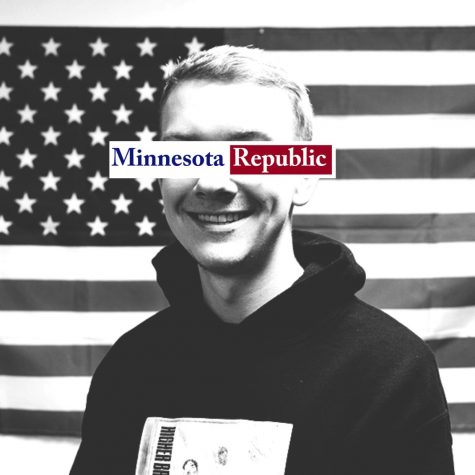Racist Incident at St. Thomas Prompts Outrage, Quick Changes
November 5, 2018
Last month, St. Thomas saw their latest racism incident that prompted protests. Walking back to his room in a dorm on campus, freshman Kevyn Perkins noticed two messages on his door that said, “go home n*****.” Perkins was understandably upset by the words, having experienced prior racism.
Once reported, the student body and faculty quickly took action to condemn the slur, talking about it in classes and complaining about it to the University board and president. The Black Empowerment Student Alliance held a sit-in at the Anderson Student Center, where hundreds of faculty and students gathered in white in order to, “Symbolize the current demographic at St. Thomas,” according to the organization.
Not only did the students respond quickly with an outpouring of support for Perkins and for a change in culture on campus, but President Julie Sullivan also took swift action to combat the recent string of racism on the St. Paul campus.
Releasing a comprehensive plan on actions the administration will take, Sullivan said, “We seek to create and sustain a diverse, equitable and inclusive community.” Classes were cancelled for Wednesday to host a campus wide conversation and to make a commitment to ending racism, the first of many steps the University is taking.
Several teachers and other staff members that were part of the Anti-Racism Coalition released an open letter criticizing the lack of progress made in combating racism on campus and said that much more needs to be done. Students have reported several incidents in the last few years, including sidewalk chalk that contained racial slurs, people wearing Trump hats and questioning whether certain students, “Belonged,” and anti-immigrant posters around campus.
St. Thomas is far from the only campus that has faced politically and racially charged controversy. The College Republicans at the University of Minnesota Twin Cities had their Paint The Bridge Panels vandalized for the third year in a row. Students at St. Olaf protested last year after a racist note was found on a black student’s windshield. The note was later found to be fabricated by another student to cause controversy. Also, the University of Minnesota – Duluth College Republicans Vice President stepped down last summer after posting white supremacist content online.
While punishment for those responsible for the racist comments is clear and already used liberally, the University and other schools are trying to change the culture to prevent these kinds of events from happening. Much of the proposed action plan by Sullivan focuses on healing students that have been affected by racism first, then creating a better climate for minority students in dorms, classrooms, etc.
Another focus that the University of Minnesota Board of Regents have also been working on is creating more representation for minorities in the faculty and in the student body. The University has consistently become a more diverse student body in the last twenty years, but the faculty body hasn’t followed that trend as much as the Regents would like. The St. Thomas action plan calls for a recruitment and retention of faculty and students of color, which many experts see as a major step in changing the culture on campus by letting students experience a wide variety of backgrounds and cultures.
Despite the importance the University has placed on this incident at St. Thomas, Perkins himself was surprised that it became so big. He also understands better the anger others feel when they are confronted by racist messages.
“I was so mad that I felt like transferring that same day,” said Perkins.












